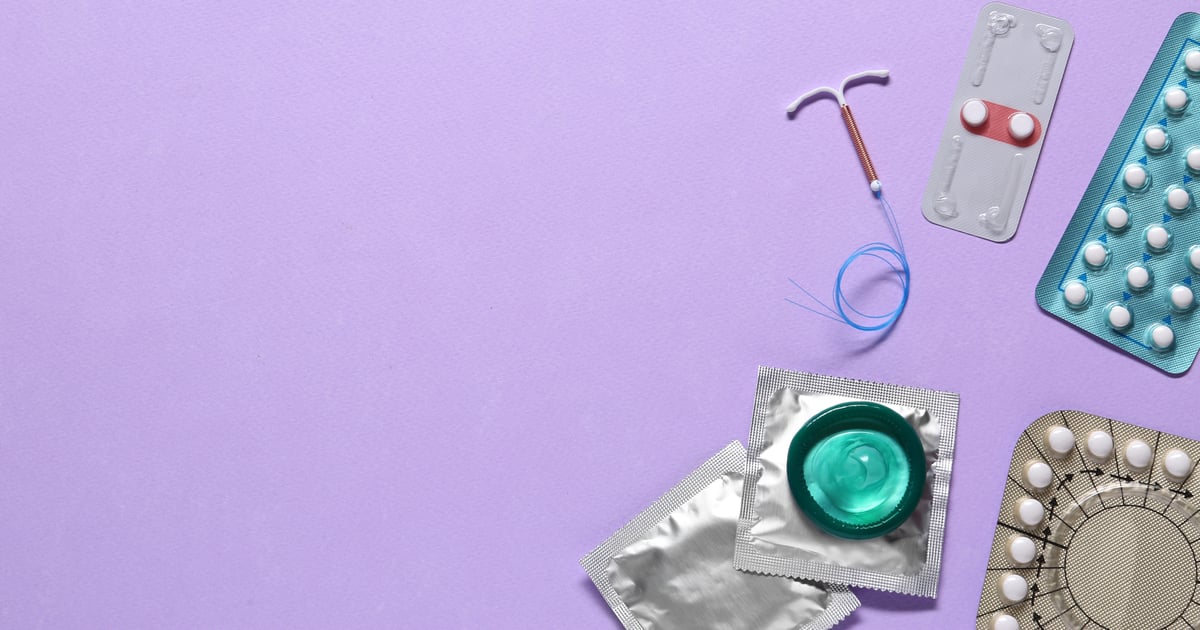Products You May Like

Editor’s Note: We at PS recognize that people of many genders and identities can impregnate others or become pregnant. For this particular story, we interviewed sources who generally referred to those who can impregnate others as men and those who can become pregnant as women.
A contraception method for those assigned male at birth is closer than you might think, and it could forever shift the way we talk about pregnancy prevention. When biotech company Contraline first announced the development of ADAM — an implant likened to an “IUD, for men” — it was predictably met with some skepticism. “What does the ‘U’ stand for? It’s not ‘uterine,'” says Diana Blithe, PhD, program chief of the Contraceptive Development Program at the National Institute of Health (NIH). “It [does] feel a little bit like a misnomer out of the gate, because it is a little less invasive,” adds Heather Vahdat, MPH, Executive Director of the Male Contraceptive Initiative (MCI).
On social media, people were also quick to point out that, despite the fact that ADAM is less invasive than IUDs, ADAM procedures are already set to be performed under local or general anesthesia. Meanwhile, research in the journal Contraception shows that clinicians often underestimate how painful traditional IUD placement is, and don’t always readily offer pain management techniques. This legitimate disparity in pain management is an issue we still need to address, but experts say that better contraception for those AMAB could be beneficial for all parties in the long run. If you can get past the polarizing marketing, ADAM could allow more people to take a bigger responsibility in protecting against unwanted pregnancies. Before forming an opinion, get the facts on the so-called male IUD, and see what’s behind the splashy name.
How Is the ADAM IUD Inserted?
Unlike the tangible T-shaped implant we might envision when we think about traditional IUDs, ADAM involves a non-hormonal hydrogel. The gel is inserted into the vas deferens (aka the tubes where sperm is transported) via a quick injection. “That gives [people with penises] the kind of protection that [people with uteruses] get from long-acting, reversible contraception, like IUDs,” Vahdat explains. “It is, in some ways, procedurally similar to a no-scalpel vasectomy. So there’s that familiarity there, too.” According to the Contraline website, the procedure is generally done in an outpatient setting with local anesthesia, and is expected to take less than 30 minutes (20 minutes on average).
How Does the Male IUD Work?
In essence, the ADAM hydrogel blocks sperm from traveling through the vas deferens, without preventing sensation or ejaculation (semen can still pass, just not sperm). Per the Contraline website, the blocked sperm “naturally degrade and become absorbed,” and at the end of its year-long lifespan, the gel dissolves, allowing sperm flow to resume. The implanted ADAM gel can also be checked via ultrasound for easy monitoring. It’s non-permanent, reversible, and has reportedly demonstrated a 99.8-100.0 percent reduction in the number of motile sperm within just 30 days of implantation.
The Interest in a Male IUD
One subject that comes up often during discussions about the so-called male IUD is doubt about the amount of people who would actually use it. But experts say the data is surprisingly promising. A global market research study funded by the MCI and the Gates Foundation, found there is proven interest in novel male contraception, and not just in the U.S. Results indicated that two in five cis men in the United States would try a new male contraceptive within a year (about 40 percent). But in countries like Bangladesh, Kenya, Nigeria, and Vietnam, the interest in male birth control is even higher. “I do think there’s a global demand for this, and I do think men will use it,” Vahdat says.
Also promising: In January, ADAM was successfully implanted in 23 patients in Melbourne, Brisbane, and Wollongong, Australia. Since then, over 7,000 cis men have signed up to participate in clinical studies. These participants span across all 50 states in the U.S., as well as multiple different countries, and include people of all different (sexually active) ages.
For Contraline specifically, 1,211 of interested participants indicated that they wanted more control over their reproduction, with 60 percent adding that their partners have or had experienced issues with their own birth control, and over 85 percent saying they were most excited to remove some burden off women and people who can get pregnant as the main users of contraception. This same survey found that enthusiasm for birth control for those AMAB was furthered by the overturning of Roe v. Wade.
But Dr. Blithe acknowledges that, because cis men can’t get pregnant, the risk-benefit analysis is different, especially when many birth control options for men are still so novel. “You’re in a situation where [cis] men are going to take a drug that may or may not have any side effects, but they’re willing to take that risk,” Dr. Blithe says. “They’re not doing it to lessen another risk that they would get from pregnancy — at least not to them physically — whereas [cis] women will tolerate certain side effects or risks, because they’re preventing a higher risk in pregnancy.” These discrepancies are worth noting when we consider new contraceptives like ADAM.
Benefits of the Male IUD
Not only would ADAM enable those AMAB to play a more active role in family planning, but it would also give women and those who can get pregnant the opportunity to opt out of hormonal birth control (if they so choose). “The ability for both parties to contracept is so exciting to me,” Vahdat says. “When you think about how much more rich the options in the conversations are when you have this full range of options . . . what it really offers is opportunities.” As it stands, conversations about pregnancy prevention are pretty one-sided. In fact, Contraline estimates that 75 percent of couples rely on the partner who can get pregnant to take responsibility for birth control. But beyond vasectomies or condoms, the possibilities for men and those AMAB are still quite limited.
Dr. Blithe adds that long-lasting, non-permanent birth control for men and people AMAB has a tremendous impact on people who can get pregnant, pointing to the insight she’s gleaned from fellow investigators studying male contraception in couples. “You don’t realize how much anxiety the woman feels as she gets to the end of the year and has to go back on a method that she wasn’t really very happy with in the first place,” Dr. Blithe recalls one investigator saying. “The anxiety is much greater than we see in our female-method trials.” This is one reason why she says better contraception for men is also a women’s health issue.
Drawbacks of the Male IUD
We’re closer to the male IUD than ever before, but Contraline’s ADAM implant is still being tested in human trials. In 2024, Contraline is gearing up for an Investigational Device Exemption (IDE) which involves the FDA giving Contraline permission to use an investigational device (like ADAM) on human subjects. This would allow Contraline to legally assess the safety of ADAM in a US trial.
Although still in the early stages of human trials, ADAM side effects have been “predominantly mild,” with no serious adverse effects reported. Even so, Vahdat says any mild side effects will play a role in a wider (and hopefully more equitable) discussion about contraception. “”Some of the guys have said it’s not a question of, ‘I’m not going to use something if it has a side effect,’ it just goes into the calculus as a couple,” Vahdat explains. “I feel like just by the nature of that — equity in relationships is going to be different. Because there’s a relatable contribution and shared empathy.”
